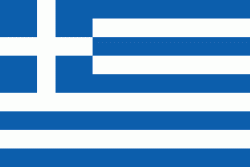Attica Prefecture (Nomós Attikís)
 |
Attica Prefecture was first established in 1833 as Attica and Boeotia Prefecture. Attica and Boeotia Prefecture was abolished in 1836 and split up into separate Attica and Boeotia prefectures, then reconstituted in 1845, and subsequently split up again into separate Attica and Boeotia prefectures in the 1899 reform; the latter reform was reversed in 1909. Attica and Boeotia Prefecture finally ceased to exist in 1943, when it was again split up into Attica and Boeotia (FEK 223Α/26-7-1943).
In 1964 created the newly formed Piraeus Prefecture and after the dissolution of the Prefecture in 1972 was one of the 4 prefectures (Νομαρχίες) of Attica prefecture.
After the 1970s, according to the administrative division of 1971 and subsequent changes, Attica Prefecture consisted of the following prefectural-level administrations (nomarchies):
* 1) Athens
* 2) East Attica
* 3) Piraeus
* 4) West Attica
It was the only prefecture subdivided like this and in many contexts the sub-units were regarded as prefectures.
Attica Prefecture was administered as part of Central Greece until 1987, when it was established as an administrative region in its own right.
Map - Attica Prefecture (Nomós Attikís)
Map
Country - Greece
 |
 |
| Flag of Greece | |
Greece is considered the cradle of Western civilization, being the birthplace of democracy, Western philosophy, Western literature, historiography, political science, major scientific and mathematical principles, theatre and the Olympic Games. From the eighth century BC, the Greeks were organised into various independent city-states, known as poleis (singular polis), which spanned the Mediterranean and the Black Sea. Philip II of Macedon united most of present-day Greece in the fourth century BC, with his son Alexander the Great rapidly conquering much of the ancient world, from the eastern Mediterranean to the North Western parts of India. The subsequent Hellenistic period saw the height of Greek culture and influence in antiquity. Greece was annexed by Rome in the second century BC, becoming an integral part of the Roman Empire and its continuation, the Byzantine Empire, which was culturally and linguistically predominantly Greek.
Currency / Language
| ISO | Currency | Symbol | Significant figures |
|---|---|---|---|
| EUR | Euro | € | 2 |
| ISO | Language |
|---|---|
| EN | English language |
| FR | French language |
| EL | Greek language |
















